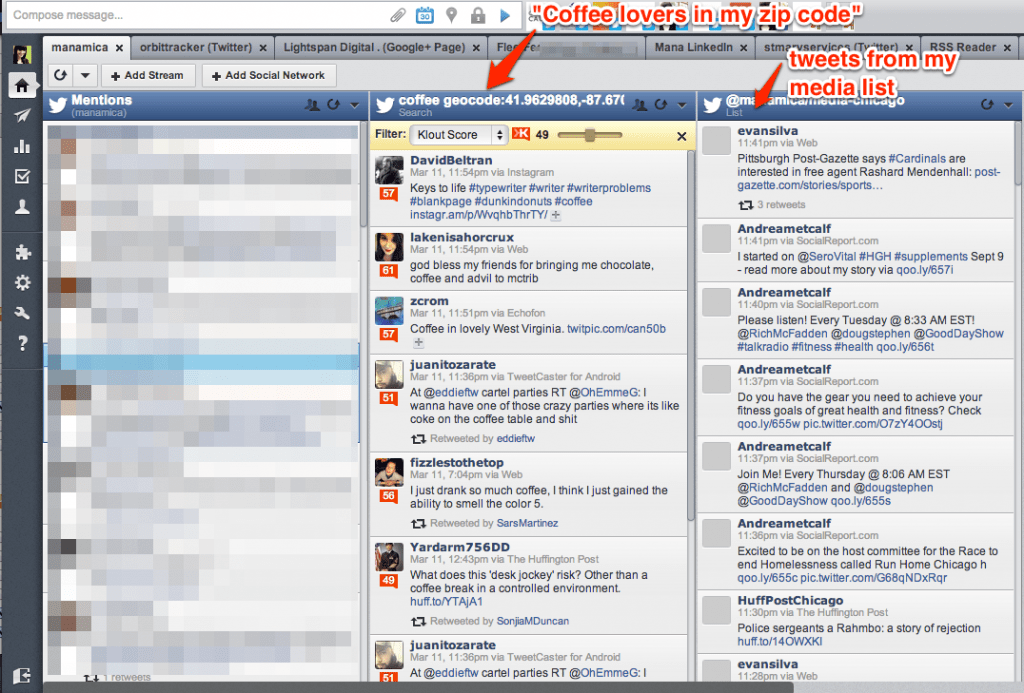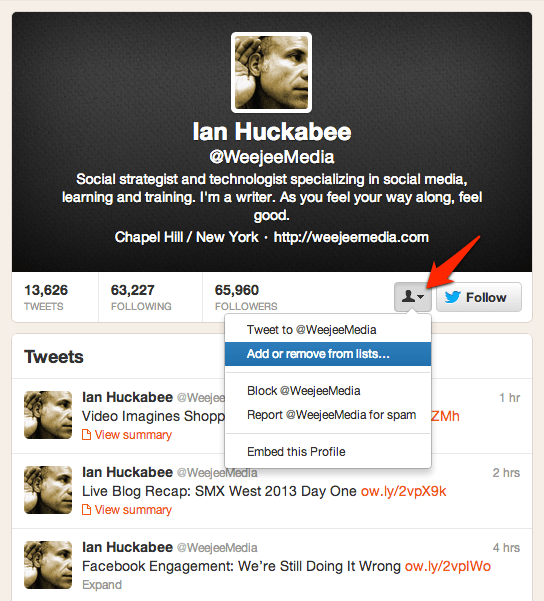Social media targeting is a common social network selling point
Facebook ads and posts promise “better social media targeting” (at a cost), LinkedIn company profile posts promise excellent social media targeting, and hashtags “promise” … targeting. You’ve heard this – “our messaging needs to be targeted to a particular group.”The head of digital at Citi said it, in a LinkedIn testimonial. So all I have to do is select the right options and hashtags, right? Wrong.
Truth: social media posts are not self-guided missiles, and limiting them to just “women” or “people 30 and up” will not turn them into heat-seeking missiles either.
Truth: We have outstanding targeting capabilities available through social media, it’s just a matter of:
1. Figuring out what targeting truly means
2. Using the tools available to us for proper segmentation and targeting
 What is targeting?
What is targeting?
Here’s a tale from the old old days of marketing. Marketing without any qualifier ahead of it. Just marketing. You don’t remember those? It’s ok, here’s a marketing tale.
“Back in the day” marketers realized that not all consumers had the same needs, demands, likes, dislikes and purchasing habits. What a surprise! People were young and old, poor and rich, some smoked and some didn’t, some lived up North and some down South. Marketers discovered there were as many flavors of people as… there were people. So to get the most bang for the buck marketers had to do 3 things:
1. Isolate people into “interest” groups (segmenting)
2. Create different approaches for each segment (“targeting“)
3. Craft a powerful and unique first impression (positioning)
4. Use really big fancy words to explain simple concepts for all the days to come
They called this model STP – segmenting, targeting and positioning.
Now let’s travel back to the “social media days.” The big fancy words thrive. The practices of segmentation and targeting have become mechanical. Since everyone says we should “target,” target we must!
So allow me to bring STP back, with some great social media flavor.
What Is Segmenting:
Segmenting is about getting to know your ideal audiences and grouping them accordingly.
1. Find your targets. In an earlier post we talked in detail about how to find your social media audience. Use the search features all social networks have readily available. To search Twitter, use a tool such as SocialBro or ManageFlitter to find your targets based on keywords in their bios. Want moms? Search Twitter bios for the word “mom,” and you will find all those who said they’re moms in their bio. Want only moms in Chicago. You can search for that too.
2. Use lists.
The brilliant yet lesser used feature of Twitter is “Lists.” Once you find your targets, group them into lists. You get 20 lists which can hold 500 contacts each. Tools such as SocialBro allow you to select multiple search results and add them to a list. Or you can simply add someone to a list from their profile as you can see in the image below.
You can access lists from your profile, by clicking on “Lists” on the left hand side.
Then, create a new list:
3. Use keyword searches by location (precise geographic coordinates ). Want to find coffee lovers within 25 kilometers of you? Let’s turn to Hootsuite.
If you hit the geolocation feature/icon in the search bar (looks like a target icon in the screenshot below) Hootsuite will prompt you to share your location. If you allow your location to be shared (don’t worry, Hootsuite picks up the details for this purpose only), Hootsuite will pull in your geocode from your Internet Service Provider (ISP) and append it at the end of the search.
Do you want to only see those who post about coffee within 3-mile radius of your zip code? Just modify the distance and boom, you get your coffee-loving neighbors.
Do you want to find coffee lovers around Chicago’s Merchandise Mart? Change the geocode to Merchandise Mart’s location (I promise I don’t have this memorized, I just Googled it): 41.885813 -87.637551
Let’s Get Targeting
Now that we have our groups “locked and loaded” let’s get this party started! Your segments will update in real time, should you choose to use a dashboard like Hootsuite (see image below). Their likes and dislikes will envolve before your eyes and exchanges will be easily possible.
Good new is, you have now the opportunity to deliver the right message to the right person. Bad news is, just posting messages won’t do the trick.
In social media, posting is the equivalent of running down the street naked with a megaphone, shouting out news every hour of the day. Just imagine how effective that will be… at getting you arrested.
Keep your posts to 20% of your content. Focus on interactions with your newly segmented targets. Social media is about conversation. Follow our earlier advice on how to formulate your social media content for best impact.
Talk to coffee lovers about coffee and talk to millennials about music and to boomers about travel. Take your time until you get to make a pitch. Listen and you will get further help to define your positioning.

This is how you target – you segment your audiences and build them into groups. You watch their activities to learn more about who they are, and how they interact online. Then you deliver content that is compelling and motivating.
Finally, Positioning!
Let me stress one point – just posting on Facebook with the “targeting” options set to “Chicago, females,” doesn’t guarantee all Chicago women will see it. It means your message will not appear in the news feeds and advertising side-bars of Chicago males. Some Chicago women may see your ad, depending o how high your cost-pe-click or cost-per-thousand bids are.
But if your message is off-topic, if it isn’t interesting to those who have the highest chance of seeing it, your targeting has failed. In other words, successful targeting is about contextual and compelling content delivered to the right audiences.
Secondly, story-telling matters. We can’t make up your stories. We can tell them through social media content, but the brand positioning and core stories should precede social media work. I recommend part-time CMOs and agencies for positioning help for small and medium-sized businesses. Work with the likes of Argentum Strategy, and 678 Partners to get your marketing focus. These are no-nonsense folk, who will help you figure out exactly what you should or shouldn’t do, with the highest level of integrity and without wasting your time.
Then work with a modern, down-to-earth agency that cares – cares about your culture, values and stories – like Sponge or Wildflower. They will help you with your positioning. You’ll be ready for the magic of social media (not magic wand, but the magic that building relationships with people can bring).
In social media, the great segmenting options make targeting more precise, as long as the right effort is put into developing content that will compel those audiences to act on your behalf.
I can’t say enough about how valuable segmentation in social media. We have the access and the tools to do it right. We have more data than ever before. Let’s not mess it up by falling into the trap of thinking that targeting will just magically happen. It will benefit us to put the thought and work into doing it… old school. STP Baby!
Tips? We love tips. Please do share!






Leave a Reply